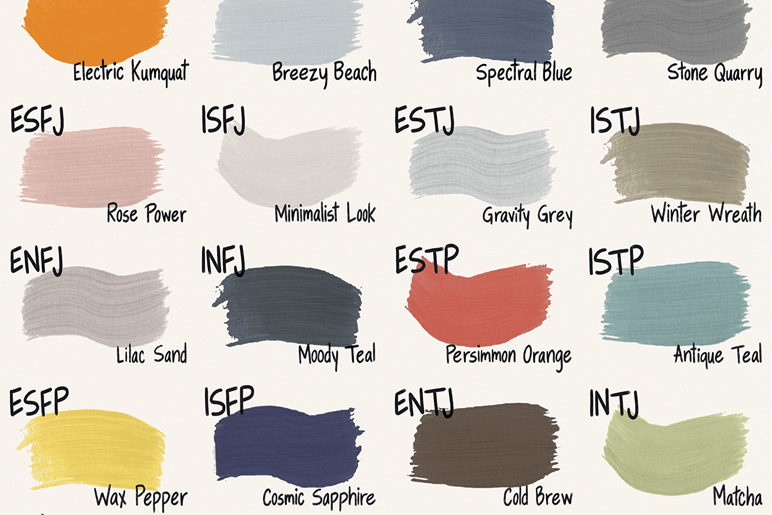Summary
The main idea here is to build a system that customizes an existing UI/UX via style transfer AI, per user preferences as well as by incorporating the Myers-Briggs Type Identifier of its user. This is to be accomplished via the application of Artificial Neural Networks (ANN), specifically Generative Adversarial Networks (GAN) and Convolutional Neural Networks (CNN) as well as Expert Systems.
There are two parts to this proposed system. The first one is the
application of ANN, GAN & CNN models to an existing web site, application
screen, and other Human Machine Interfaces for s tyle transfer. The other is the training of these ANN, GAN
& CNN models for each of the 16 MBTI types.
Training sets of data are used to
train GAN/CNN models to create artwork, images, color schema, fonts, music etc.
from pre-existing such items in a manner that conform to each individual MBTI
type’s preferences. The training data is
created from published research as well as from the results of conducting
workshops and performing psychometric measurements.
These Neural Network models are
deployed in an execution environment and are made available to other
processes. There is one such model for
each asset type and 16 MBTI types. That
is, for the MBTI type INTJ, there is a model for music, a model for artwork, and
other such media. The customization of
color and text properties is achieved via an Expert System for specific MBTI
type.
The MBTI Transformation Services
receives a MBTI type identifier from the calling process. (The MBTI may be furnished by the user of the
system or may be inferred through some other means – that is not part of this
disclosure). It selects the
corresponding sets of models for that MBTI types, using those models to
transform the assets of that UI. It does
so by pulling those assets for that UI and inputting them into the corresponding
AGN/CNN model. The MBTI Transformation
Services is deployed in a data center and is made accessible to calling
processes and clients via a suitable application programming interface such a Web
API, SOAP, RPC, or other such protocols.
The result is a UI in which the text
attributes (such as font), color scheme, artworks etc. have been altered from
their original state to conform to preferences of specific MBTI type.
System Diagram
MBTI & Colors
ISFP: exact details, emotion-based art, known as the “artist”—generally in the arts, don’t like being told how/when/what to draw or being given deadlines, Paul Gauguin, creates art of the here and now.
ENTP: like to portray mental designs onto paper, use other art to base their art of, Leonardo DaVinci, don’t like being told how/when/what to draw or being given deadlines, idealistic art (can show their logical visions for the future).
ENFP: doesn’t always finish art pieces, instead creating a string of sketches and ideas until they find one that they particularly like, emotion-based art, imaginative/abstract art, don’t like being told how/when/what to draw or being given deadlines.
ESTJ: exact details, don’t mind being given structure/instruction in art (ex: art class), create for the result.
ENTJ: don’t mind being given structure/instruction in art (ex: art class), idealistic art (can show their logical visions for the future).
ENFJ: soft, often will depict people (especially their expressions), emotion-based art, imaginative/abstract art, don’t mind being given structure/instruction in art (ex: art class), appreciate art history to provide historical/social context for pictures.
MBTI & Interior Decorating
Novelty & non-obviousness
The novelty of the system is in the
automated processing of an existing UI/UX to conform to the preferred styles of
different MBTI types. The assets of the
user interface, such as text attributes, images, color schema, themes, videos,
audio files are altered to conform to those preferences. This is accomplished by using Generative
Adversarial Networks (GAN) and Convolutional Neural Networks (CNN) and related
Artificial Intelligence techniques such as Expert Systems as well by using such
programming techniques as Markup/Declarative programming languages and Programming
Frameworks. GAN, CNN, and other such
models are developed and trained on basis of training data sets that relates
each of the 16 MBTI. Such programming
tools (meant here only as an example) as Dynamic HTML, Style Sheets, JavaScript
Frameworks are then used to update the initial web page with these modified
assets.
Benefits & limitations
This system is intended to offer
customized User Interface/User Experience (UI/UX) to customers. That is accomplished by enabling alterations
to the themes, layout, colors, content, modalities, and other features of UI/UX
based on the Myers and Briggs Type Identifier (MBTI of the consumers.
It is well-known that people
belonging to one of the 16 different psychometric MBTI types exhibit different
preferences in their learning styles, in their communication styles, as well as
in their artistic and color preferences.
This system is aimed to automatically customize an existing UI/UX for different
MBTI types. The underlying style transfer can additionally be divorced from the
MBTI types and used as an in-general style transfer process for user
preferences.
This is meant as an addition to and
an enhancement of the usual practice in UX/UI design of a persona; a fictional
character that represents a typical user of an app, website, or other product.
References
MBTI Foundation:
The
Myers & Briggs Foundation - The 16 MBTI® Types (myersbriggs.org)
Predicting Myers-Briggs Type Indicator with Text
Classification:
Creative Tools to Generate AI Art:
Top
41 AI Art Generators: Make AI Art, Paintings & More (2021 GUIDE) —
AIArtists.org
Neural Style Transfer: Creating Art with Deep Learning using
tf.keras and eager execution:
Writing a music album with Deep Learning:
Writing
a music album with Deep Learning | by Nicolás Schmidt | Towards Data Science
Music Style Transfer with Deep Learning Method
Music
Style Transfer with Deep Learning Method | by Rex Zhou | Medium
Expert Systems:




















No comments:
Post a Comment